The radio, another mass communications medium that has become just slightly obsolete with the digital dawn of thousands of fictional and nonfictional podcasts and websites like iTunes, was a revolutionary breakthrough at the time of its conception. Nowadays, if I use the radio it’s while I am in the car driving somewhere. But back in the day it was a machine which embodied, among other elements, the right to freedom of speech.
Radio waves, a type of radiation or energy, are vital to the functionality of a radio. (No kidding!) Sound is recorded and transformed into electrical energy using a microphone. The energy waves are transmitted from a station’s antenna or satellite dish to the antenna on your radio or vehicle where the radio waves are converted back into sound.
The brilliant yet often overlooked inventor Nikolai Tesla displayed the use of a wireless radio as early as the 1893 in Missouri. However, the Italian inventor and Nobel Prize winner Guglielmo Marconi is considered the father of radio. In 1901, Marconi became the first person in human history to send radio signals over the Atlantic Ocean. A successor to Thomas Edison’s phonograph in relation to listening to music, the radio was employed not only as a means of entertaining people but also to inform them on issues of the times.
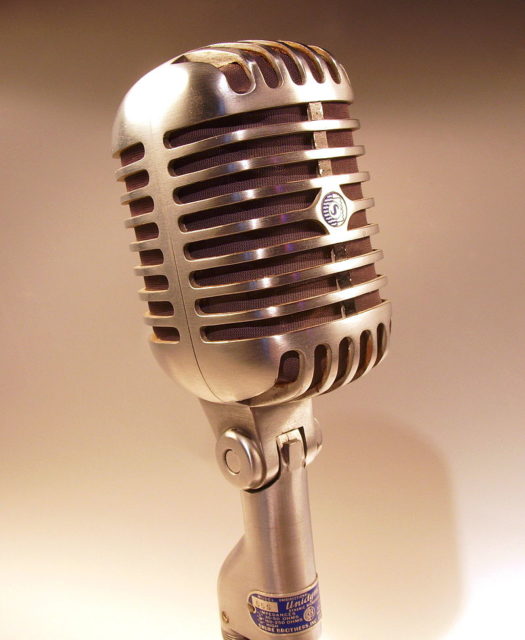
In the early 1900s, radio was actually used mainly for contacting seagoing vessels. But when World War I emerged, radios quickly became vital military instruments for sending and receiving important information needed in decision-making as well as orders. The first commercial station, KDKA, was formed in the U.S. in 1920.
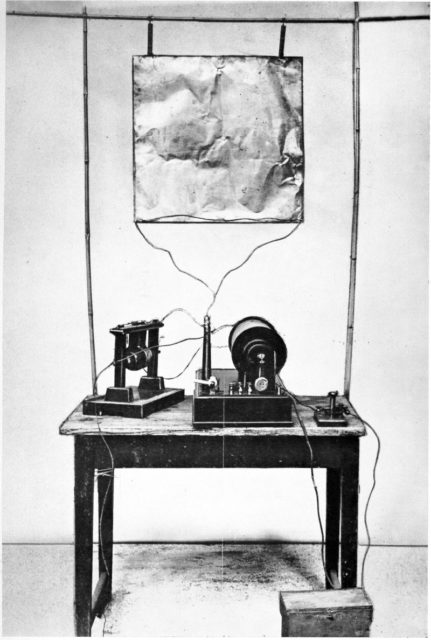
As the “Roaring 20s” continued, along with the Great Depression, America gave birth to several more well known radio stations such as AT&T, CBS, and NBC. In the early years of the same decade, the BBC was begun in London. Radio did not show signs of stealing the popularity of British newspapers until about 1926, when the newspapers went on strike.
By the 1930s, radio was being employed in many ways small and large alike. As a new and growing field in the media, radio was a far-reaching way to connect with various audiences. There are several outstanding examples as to how radio was used in America and elsewhere.
It was on March 12, 1933 that President Franklin Delano Roosevelt delivered the first of his “Fireside Chats” which was broadcast over the radio. Roosevelt was an excellent speaker; he is the man who gave us that famous line in his first Inaugural Address earlier in 1933: “The only thing we have to fear is fear itself.” His Fireside Chats were a series of talks delivered via radio to the people of the United States from 1933 to 1944. In them, Roosevelt discussed issues of the day and ideas on how to cope with big problems. Among the topics he touched upon were his New Deal programs, the recession, and World War II.
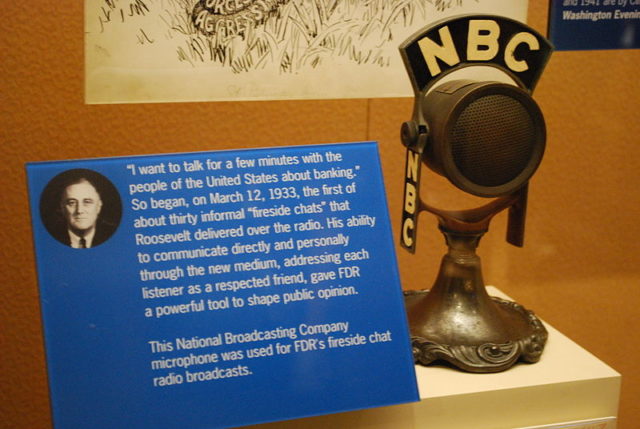
All 28 of the Fireside Chats were included among the first 50 recordings of the National Recording Industry of the Library of Congress. It is interesting to note that in 1933, the same year FDR began his informative radio talks, the entertaining tale of the legendary Lone Ranger was first told–on radio. The show was broadcast from Detroit, Michigan. The Lone Ranger was eventually adapted into a television series that ran from 1949 to 1957, the 2013 Disney feature film, and several other lesser known movies. Quite a few other shows had their beginnings as radio programs.
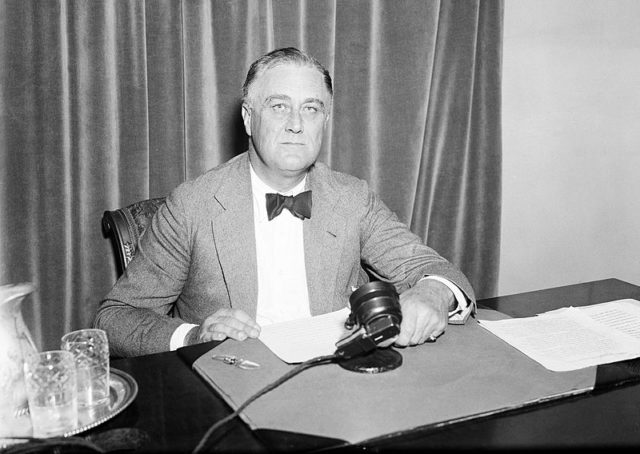
The Green Hornet was produced as a TV show that ran just one season from 1966 to 1967. Previously, The Green Hornet had been produced as a radio show from 1936 to 1950. Gunsmoke was a later radio show, originally running from 1952 to 1961, bringing on the longest-running TV Western with the same title and main character that ran from 1955 to 1975.
Roosevelt was not the only person using the radio for expressing political views and needs during his time. Father Charles Coughlin, a Canadian-born Catholic priest and activist, was making radio broadcasts as early as 1930. Father Coughlin used his radio show, The Hour of Power, to promote FDR as the 1932 Presidential candidate.
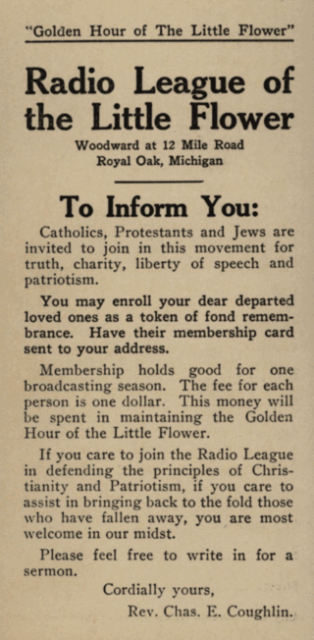
However, Roosevelt distanced himself from the priest after winning the election and seemed to ignore the fact that Coughlin’s actions had greatly aided him in his presidential campaign. Charles Coughlin was a very influential man in the U.S. during the 1930s and not just through his radio personality; he was also founder of the National Union for Social Justice in 1935. The next year, he began the journal Social Justice.
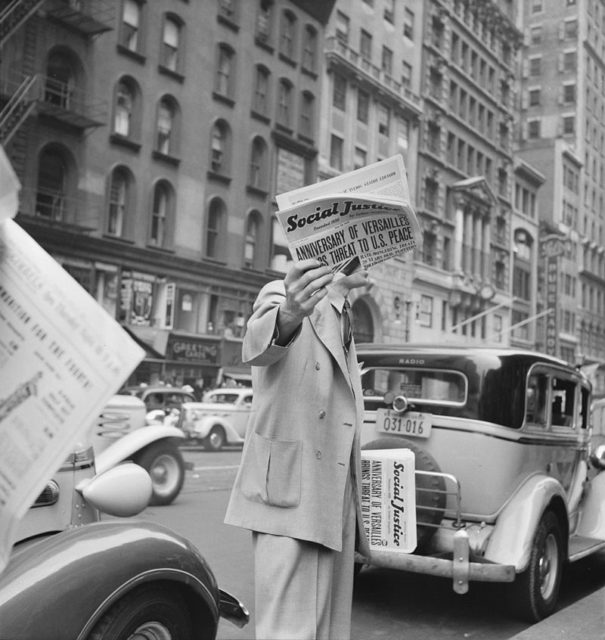
Father Coughlin was not the only Catholic priest using the radio and other media in the 1930s. Over in Poland, Father Maximilian Kolbe had founded the city of Niepokalanow. While Coughlin’s use of mass communications was geared mainly towards discussion of political issues, Kolbe’s use of the media was primarily for bringing people to the church. Maximilian Kolbe and his Franciscan brothers printed a daily newspaper which eventually had a circulation of 230,000 as well as a magazine.
In 1938, he started a short-wave religious radio station, having the call sign SP3RN, and had plans to bring his amateur radio operations to Nagasaki, Japan. Kolbe even had plans to construct a motion picture studio. But in 1941, his hopes and dreams were ended. Kolbe’s monastery was closed by the SS division of the Nazis and the priest was sent to the concentration camp of Auschwitz. He was killed later that year, taking on the death penalty of one of his fellow prisoners. The Roman Catholic Church recognizes him as a saint as well as a martyr for the faith.
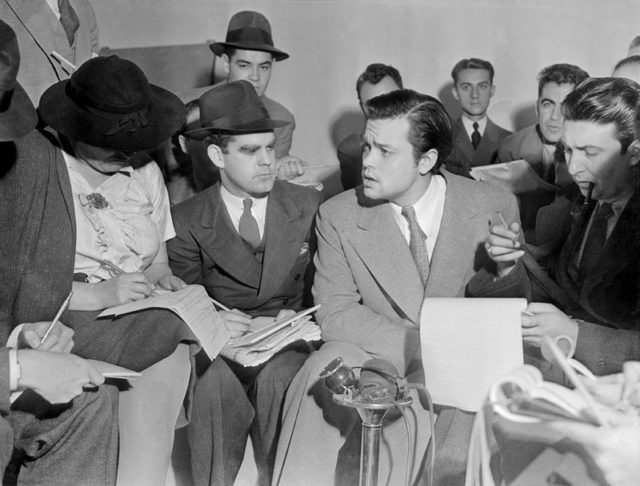
The year 1938 was also a rich one for U.S. radio. H.V. Kaltenborn, a well known news broadcaster of the day, delivered over 100 CBS radio newscasts in a period of 21 days regarding the Munich affair in Germany. It was also in 1938 that Orson Welles and John Houseman broadcast the audio spectacle of an adaptation of H.G. Wells’ novel The War of the Worlds, which reportedly startled many Americans, making them believe aliens had invaded.
As in the U.K., this decade gave way to radio overcoming U.S. newspapers in popularity. Between 1929 and 1933, radio advertising earnings doubled, while that of the newspapers dropped to nearly half. There is no doubt that the 1930s was the classic, golden era of radio, and it is unlikely we will see a similar period in which radio use is so widespread and to such a large effect.
——————————————————————————————————————————————————————————————————————————
John Tuttle is a content writer, creative writer, movie/TV critic, photographer, and video maker with interests in science, history, film, and other areas.
He has been published in Thought Catalog, Ancient Origins, War History Online, Movie Quotes and More, and Digital Fox Media. Check out his blog, Of Intellect and Interest,
…………………………………………….
